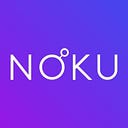Designing a token model is somehow similar to create a business model with the important difference that it is not easy to modify a token model, after creating it. For the first time in history, humans have created a form of digital information that is unique. One that cannot be duplicated, erased or manipulated. This sequence of bits can express not only money but also the ownership of a house, a car, or a company. It is more of a service than a currency. Some of these unique pieces of digital information can be defined as “tokens”.
The value of a token is determined at the intersection of supply and demand for that token. This intersection indicates the price. For this reason, when it comes to the creation of new tokens, Token Economics is one of the most relevant parts of your Blockchain project. This is extremely important because the value captured by a token is essentially its utility or intrinsic value. Moreover, it also ensures that the token’s price grows alongside adoption/success of the underlying project. A token lacking utility will see its price supported only by speculation and is very likely to fail in the long-run.
Every token created with our Token model Management Framework on Tokenraise project follows quality assurance guidelines, written and reviewed in order to conduct successful and sustainable Token Sales.
Not only currencies
It has become clear with the latest industry trends, that cryptocurrencies can do so much more than taking over existing currencies. They can be used to tokenize assets, give access to technology platforms, represent ownership, make holders become active participants of decentralized networks, among many other uses. Due to this, digital tokens are creating entirely new economic models which we refer to as token economics.
Incentive Theory
Models for token economies are shaped and implemented before a new token is launched. As in all economic models, one of the first steps is to identify specific behaviors that create a strong community with a common goal. A powerful token model studies human action and acknowledges the strength created by incentives and game theory. Considering a token only as technology would mean ignoring all the new strategies to generate value introduced by Blockchain technology, as we explained in one of our previous articles.
While most features in a Public Blockchain are measurable and quantifiable, designing a token model is far from being an exact science. However, there is one constant feature on which every model is generally based: Game theory since people act upon incentives. In a token economy, these incentives are the tokens themselves and they are used to encourage network members to behave to the benefit of the network. In fact, by doing what’s best for them, they do what’s best for the network.
This system of decentralized trust has applications that we still don’t completely understand. Its characteristics give a whole new potential to the economic sphere.
Demand, Supply, Token Model Frameworks
Initially, the token may be offered to a small audience of investors, which we can call “Family, Friends & Innovators”. Usually, this offer (private sale) is not made public and takes place long before the actual Public Sale. These first subscribers are those who risk the most and wait for the longest, but in exchange, they receive the token under preferential conditions: greater discount and special bonuses.
In any case, whether the token is spread via a public offer of purchase (Private Sales, ICO, STO, ETO) or free distribution (AirDrop), token appreciation will always require a market in which to buy it. This means that it is of fundamental importance that the token is available on large Exchanges, which are nothing more than huge markets for the exchange of tokens and cryptocurrencies.
There are several Exchange services that offer listing services, but as the token market is rather crowded, the value of each token may vary on every exchange. When the token is valued on just a few small markets, it can be difficult to liquidate due to a lack of buyers or sellers. On the contrary, when a token is highly demanded and priced on many exchanges, it is usually very liquid and the prices of the various Exchanges tend to merge.
Taking into consideration all these aspects might be a difficult process, considering it needs to be planned out before launching your project. The good news is that you don’t necessarily have to deal with this problem. Thanks to our Token Model framework and our Blockchain Managers, we ensure that all the TokenRaise offerings have a stable and strong design, representing real value.
